If you’re planning on selling an online course, one of the first things you may worry about is the time needed to create one. Although we’d like to give you a straightforward answer, we can’t do that.
The time it takes to create an online course from scratch depends on many factors, including the length and depth of your course, your experience with course creation, whether you’re doing it alone or delegating part of the work, etc.
So, no, we can’t tell you exactly how long it takes to create an online course. What we can tell you, though, is that it’s generally assumed that it takes between 25 to a few hundred hours (some sources say 500, but we think that’s relative).
⏳ While you can’t plan the exact amount of hours in advance, you must not underestimate the time you’ll need to create your course.
Creating an online course is a process that involves a series of more or less complex steps. In this article, we’ll give you a rough idea of how long each step might take.
Factors That Influence the Time It Takes to Create an Online Course
Many things can influence the amount of time you’ll need to create your online course from scratch. Here they are.
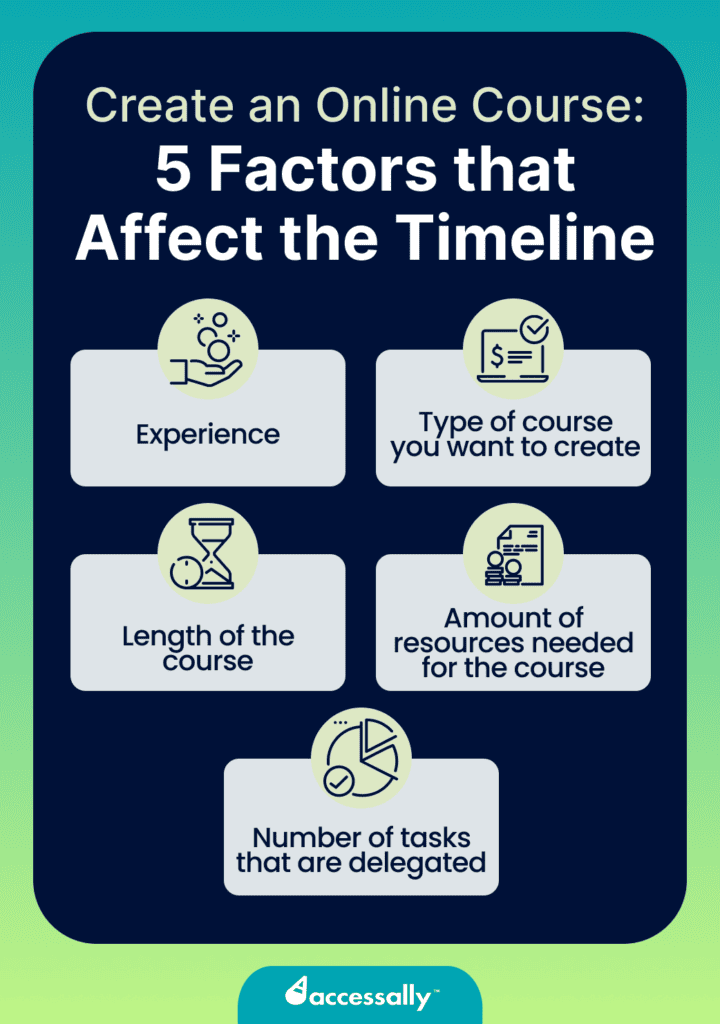

Your Experience
The more experience you have, the faster you’ll go through all the steps needed to create your course. However, if this is your first time creating an online course (and if you’re reading this, it most likely is), you may need to account for the learning curve. Getting the hang of some tasks may require more time than you initially planned.
For instance, if you’re new to speaking in front of the camera, you might initially underestimate the time required for recording your video lessons. Getting comfortable speaking in front of the camera can take practice. You might find yourself doing multiple takes to get it right, which can be time-consuming.
What’s more, you need to consider the time you have available to create your course. If you’re building your course alongside a full-time job and other commitments, you may only have a few hours per week to work on it. In that case, the process will naturally be much longer.
The Type of Course You Want to Create and Its Length
Another factor that influences the time needed to create your course is its length and depth. For instance, a mini-course with 2 hours of content can be created in a few days. However, an in-depth, 25-hour-long signature course may take months to build.
Aside from its length, the complexity of the topic and the level of detail you intend to include also play a big role. A course covering a broad topic overview will generally take less time to develop than one covering complex, specialized areas. Following the same logic, a course aimed at beginners will be easier to create than one aimed at advanced learners.
What’s more, producing an audio-only course will generally take less time than a video course, which requires filming yourself speaking to the camera and video editing.
💡 As a general rule of thumb, the longer and more complex your course is, the longer it’ll take to create.
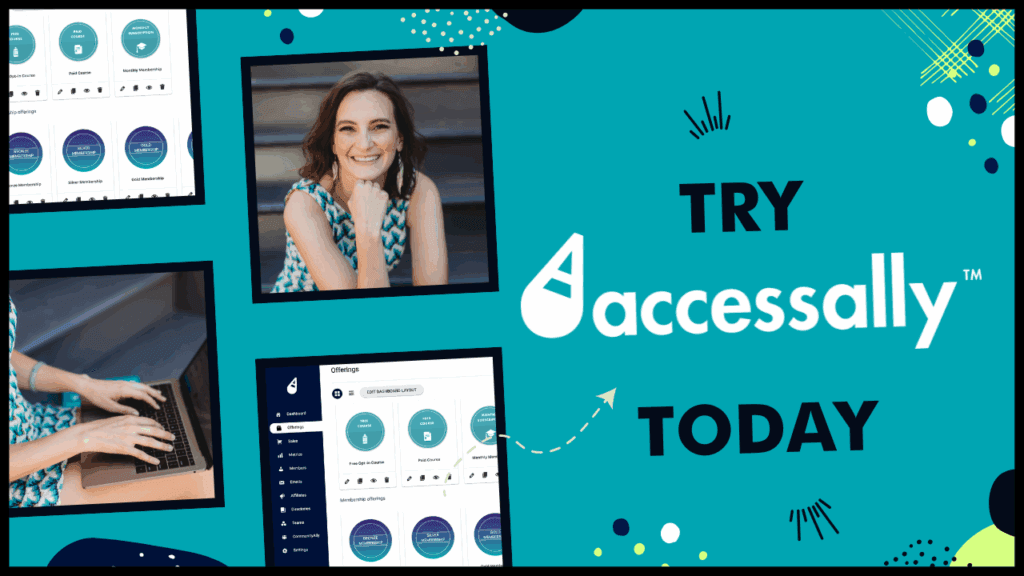

The Amount of Resources Needed for Your Course
The more resources and extra supporting materials your course requires, the longer it’ll take to create it. Some courses are pretty straightforward and don’t require much beyond the core content. However, others might need a range of supporting materials like workbooks, downloadable PDFs, interactive quizzes, or even supplementary reading lists.
🎙️ If your course includes a lot of supporting materials, prepare for a longer creation timeline. Each of these resources must be planned, created, and edited, and that, of course, takes time.
What’s more, if your course relies on video content, the type of videos you choose to produce will significantly impact your timeline. For example, a course with simple, straightforward talking-head videos might not take as long to create as one with complex animations.
Either way, never underestimate the time it takes to record and edit your video lessons.
The Tasks You Delegate
If you’re creating your course all alone, you’ll need more time to complete it, especially if you’re new to online course creation. You’ll have to handle every aspect of course creation on your own, which means you’ll need more time to account for the learning curve, the trial and error process, and figuring stuff out.
However, if you plan on delegating part of the work or outsourcing tasks, it’ll significantly speed up the process. For instance, by outsourcing video editing, you free up hours that you can then spend on refining your content or marketing your course.
Steps to Create an Online Course and Estimated Time
Creating an online course is a multistep process, and each step has its own timeframe. If you’d like to learn more about the course creation process in detail, we have a full article dedicated to that topic.
When it comes to the amount of time you’ll need to complete each step of the course creation process, there’s no one-size-fits-all estimate. It will vary significantly from course creator to course creator.
To give you a rough idea of how long it takes to create an online course, we’ll give you the approximate percentage time estimates for each step in this section.
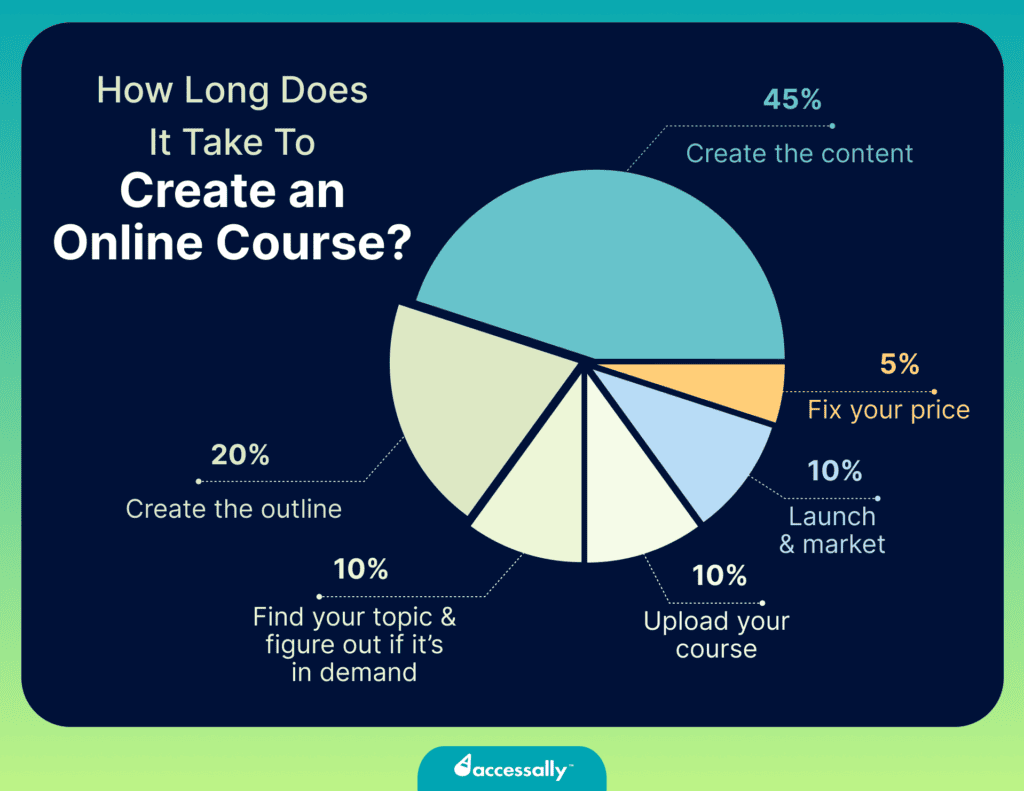

Find Your Topic & Figure Out if It’s in Demand: 10%
Your course topic is probably the most important element of the entire course creation process. Choosing the wrong topic can set your course up for failure from the start. That’s why it’s important to take your time to properly research whether there’s a demand for your course idea.
🧠 If you don’t have an idea for your course, you’ll need to spend more time learning about your audience and coming up with potential topics that may be relevant to them.
This process shouldn’t be rushed. You’ll need time to identify market trends and gaps, analyze your competitors, figure out if there’s a demand for your course topic, and refine your course idea.


Create the Outline of Your Course: 20%
Creating your course outline may be time-consuming, but it’s necessary to set your course up for success. A properly structured and well-thought-out course outline is the backbone of your entire course.
A good outline will make creating your course much easier and quicker because it lets you know what content to create for each lesson and how the lessons fit together in each module. This will be your guide for the rest of the creation process, so make sure not to rush this step.
Create the Content of Your Course: 45%
Once your course outline is done, you can start creating the content for your course. This will be the longest part of the process. You’ll have to prepare every element of your course, from filming your video lessons and editing the videos to designing any supporting materials, creating assessments, and so on.
✅ The good news is that if you’ve taken your time to create a good outline, the actual course creation process will be much faster because you’ll know exactly what should be included in each lesson and module.
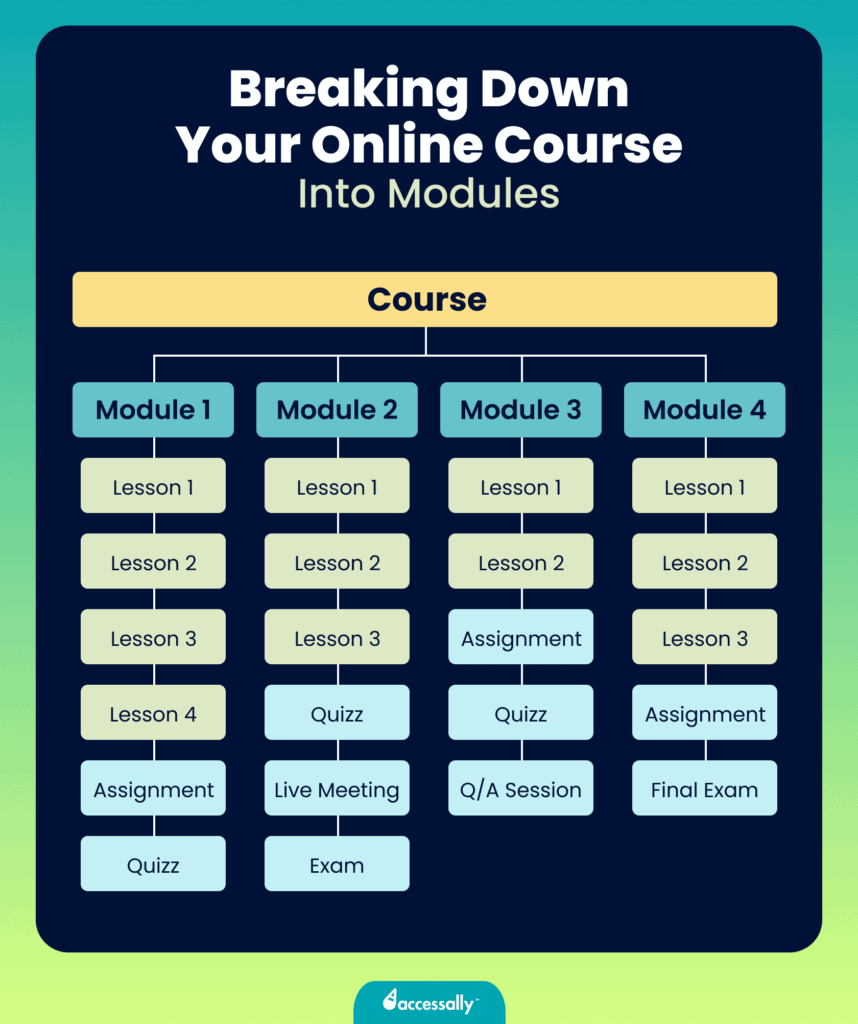

Fix Your Price: 5%
Setting the prices of your course is an important step in launching an online course, but it shouldn’t take long to do that.
🛑 Although it may be tempting to just come up with a number and be done with it, it’s important to take your time to consider things like competitor pricing, the value proposition of your course, its length and depth, and the financial well-being of your target audience before setting your price.
Based on that, you’ll be able to come up with the right price for your course. Plus, remember that your course pricing isn’t set in stone. You can always adjust it later based on feedback, market demand, and other factors.
Upload Your Online Course: 10%
A big part of making sure your course is set up for success is choosing the right online course platform. Finding the best platform for your course can be a lengthy process, so here’s a summary of the 10 best online course platforms in 2024.
If you already have a website and know what platform you’d like to use to host your course, you’re one step ahead. Once you purchase your hosting plan, you’ll be able to upload and set up your course on the platform.
This shouldn’t be a long process if you’ve already completed all the previous steps thoroughly and prepared all of your course content.
However, make sure not to skip any elements of the setup process, such as access restriction, creating a landing page, and so on. To make sure your course is ready to sell, go through every setting carefully and thoroughly.
Launch & Market Your Online Course: 10 %
Depending on your launch strategy, marketing your course may be an ongoing process. You should allow yourself some time to create a marketing strategy that aligns with your goals, selling style, and your audience’s preferences.
If your course is evergreen, you’ll need to consistently market it via various channels, such as your social media platforms, email list, or paid ads. If you’re opting for a big course launch a few times per year, you’ll only need to focus on your marketing efforts for a few weeks before the launch.
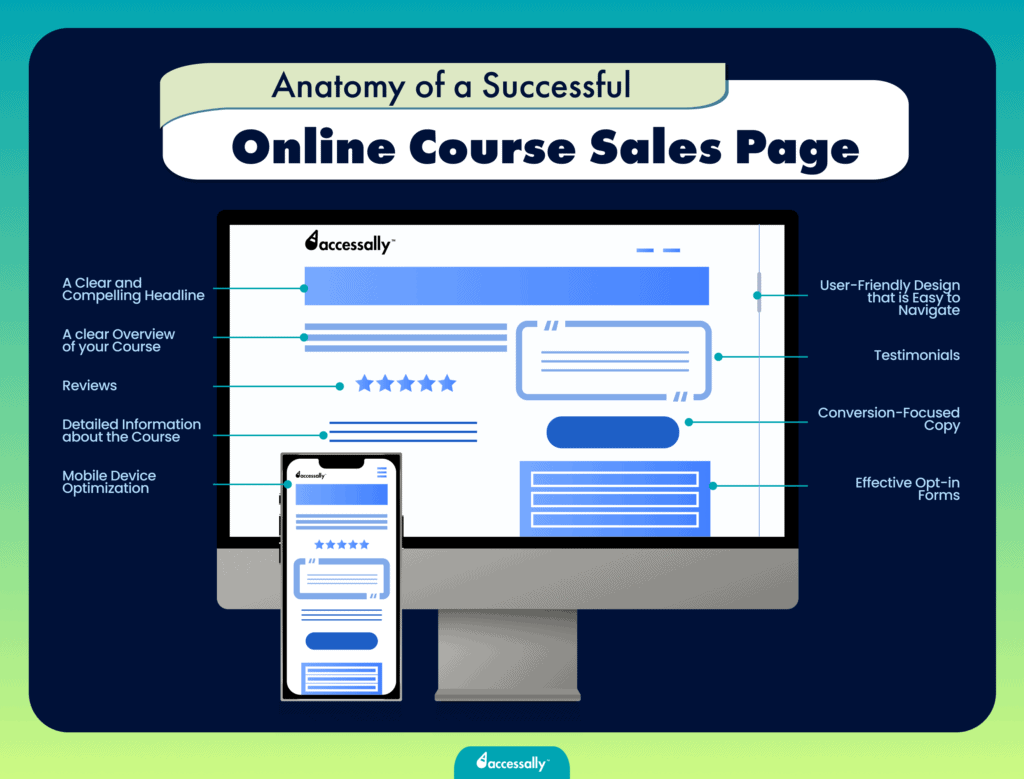

Tips to Make the Course Creation Process Faster
Although creating an online course is a lengthy process, there are some things you can do to speed it up.
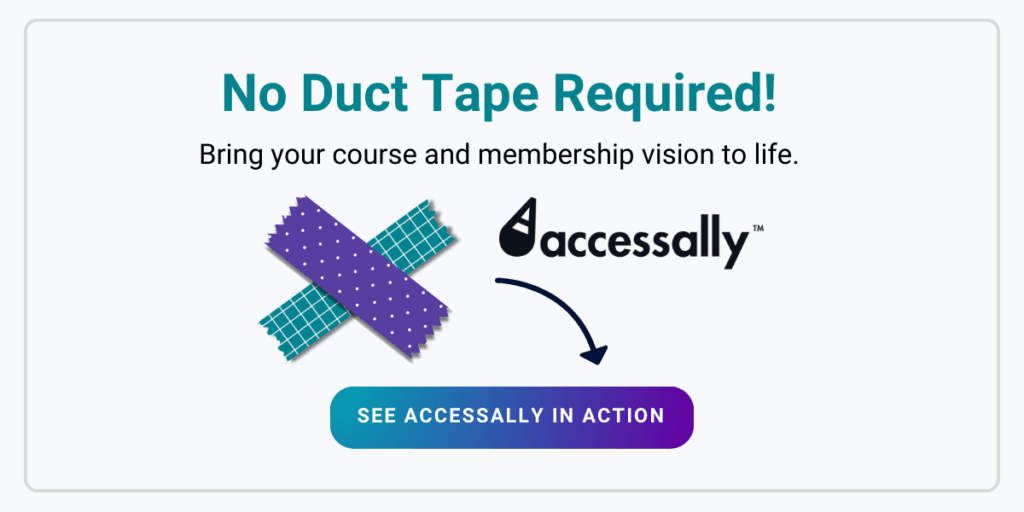

1. Plan your course well.
Planning your course will help you gain some time during the creation process because you’ll know exactly what to do, and you won’t be stumbling in the dark. That’s why you should take your time to create a proper course outline, find the right online course platform, and prepare anything you might need during the content creation process.
2. Outsource part of the work.
There are a lot of things you must do to build an online course from scratch, and you’re likely not an expert in all of them. Some things may take you much longer to do because there will be a learning curve involved.
Outsourcing these tasks to professionals can help you not only free yourself some time but also relieve the burden of having to do something you’re not familiar with. Plus, this way, you’ll get professional results that can elevate the overall value of your course.
If you don’t have an internal team to work on certain parts of the course creation process, you can hire freelancers to take care of specific tasks, such as video editing, landing page design, and so on.
3. Reuse existing resources.
If you’ve already created materials and resources for your clients, for example, to support your 1:1 sessions or to sell as digital products, you can reuse them in your course instead of creating every single thing from scratch. Also, if you already have a few PDF worksheets, quizzes, or templates, it’s a good idea to include them in the course for added value.
Overall, you must be prepared for the fact that creating and selling an online course takes time. You might feel tempted to skip some seemingly less important parts of the process (like creating a course outline, for example) to make it faster, but it’s crucial to have patience.
Sure, the creation process will take time and effort, but if you do everything right, your course will have a much higher chance of succeeding in the long run.



